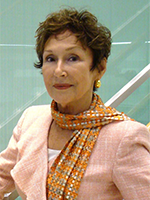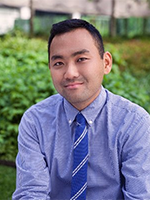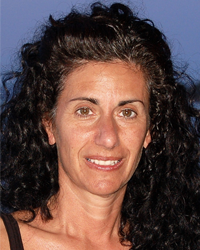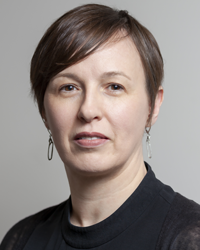The population structure in the U.S. is rapidly changing. Increased life expectancy, strong immigration, and a fertility rate, which is now 1.9 children per woman higher than in other developed countries, will cause a population increase from 325 million (2017) to 390 million (2050). The population ages 60 and older will experience the strongest growth, and their share in the total population is expected to increase from 12 percent (1950) to 28 percent (2050).
These demographic trends create new societal challenges, for example in retirement and healthcare systems. Education in older age has the potential to transform such challenges into opportunities. Research suggests that learning in later life can help to counteract declining cognitive abilities, increase self-confidence and independence, contribute to life satisfaction and prevent loneliness by providing a platform for social interaction. It can also help to maintain an educated workforce.
Although learning in old age is beneficial for society and the individual, enrollment data indicate that traditionally older adults have been underrepresented in organized education. Nevertheless, mature adults in the U.S. can choose from a rich assortment of educational programs and providers. While some provide learning opportunities for adults of all age groups, others exclusively target older learners.
How it All Started
Guest-auditing programs are common at higher education institutions. The Donovan Fellowship for Academic Scholars at the University of Kentucky serves as a model. It started in 1964 and for the first time provided older adults the opportunity to take higher education classes on a guest-auditing basis, free of charge. Inspired by this idea, similar programs emerged throughout the country. Although guest-auditing programs differ from one another, they typically share some characteristics: no formal educational degrees are required, no credits can be accumulated, and course access is granted on a space availability basis.
One of the most well-known providers of older adult education in the U.S. are the Lifelong Learning Institutes (LLIs). The institutes were founded in 1962 at the New School for Social Research, New York, as the “Institute for Retired Professionals.” The Institute’s goals were to make higher education accessible to older learners and to create a peer-learning community. What made the program unique was that the attendees contributed to the Institute as both instructors and participants.
Attendees contribute to Lifelong Learning Institutes as instructors and participants.
Other universities adopted the concept and hundreds of new programs were started in the following decades. One of the most significant developments in the history of the LLIs occurred in 1999 with the involvement of the Bernard Osher Foundation, which financially supports the growth of new LLIs, the so-called Osher Lifelong Learning Institutes. Inspired by other successful LLIs, the first OLLI started in 2001 at the University of Southern Maine. In the following years, more OLLIs opened at public universities. Now, about 450 LLIs exist in North America, with 120 of these being OLLIs.
Although the LLIs/OLLIs are independently organized, they typically have specific characteristics in common: they are sponsored by higher education institutions, which provide class space, administrative and financial assistance; are open to adults ages 50 and older; hold a nonprofit organizational status; require membership; offer affordably priced courses; and provide need-based scholarships. Also, members are encouraged to become involved as volunteers.
Elderhostel (now Road Scholar) was founded in 1975 by Marty Knowlton and David Bianco as a short-term summer residence and educational travel program for mature adults. The founders were inspired by the European Youth Hostel movement and its possibility of meeting other travelers in inexpensive lodgings. Inspiration also came from the Scandinavian “folk schools,” in which older adults teach younger people arts, dance and music. Starting with 220 attendees, Elderhostel quickly grew and expanded its programs beyond higher education institutions. The organization was renamed Road Scholar in 2010 and offered in pre-pandemic times (2018) more than 8,000 educational trips to more than 150 countries. Since its founding, more than 5 million participants have joined Road Scholar’s educational travel programs.
OASIS was founded in 1982 to provide adults ages 50 and older with opportunities to stay healthy and active in their communities. Initial financial support came from the U.S. Administration on Aging, which funded the project for two years and helped to start OASIS in four U.S. cities. Another prominent supporter was the May Department Store Company, now Macy’s, Inc., which provided meeting spaces in their stores.
Over the years, OASIS expanded its partnerships and created new program sites throughout the country. Prior to the pandemic, the organization was active in 50 cities and partnered with more than 700 community programs and institutions. OASIS has a strong focus on lifelong learning and offers a variety of courses for older adults of all educational backgrounds. The courses are either free or moderately priced to make the programs accessible for low-income elders.
Road Scholar in 2018 offered more than 8,000 educational trips to more than 150 countries.
The Shepherd’s Centers of America were founded in 1975 in Kansas City, Missouri, as a network of interfaith organizations that provide educational, social and community-based services for older adults. Besides various health programs and assistance services such as in-home visitors, adult daycare, shopping and transportation help, older adults partake in various educational classes that are taught by peer-instructors. The network is primarily funded by donations, grants, corporate support and center affiliation fees.
One of the most widely used lifelong learning resources for older adults are senior centers. The idea for a senior center goes back to 1943 when a group of public sector workers concerned about the living situation of the older population with whom they worked started the William Hodson Center in the Bronx, New York City.
More than 70 years later, about 11,400 centers serving more than 1 million older adults daily exist throughout the country. The centers differ significantly in size, membership and program offerings, which typically depend upon needs of the individual community and available funding. However, all centers can be described as aging-in-place resources that provide healthy aging opportunities, such as educational and health programs, meal and in-home visiting services, transportation assistance, counseling and social programs.
An example of a nonprofit organization that offers lifelong learning from the comfort of home is Mather. Mather’s “Telephone Topics” program provides free educational classes that are taught over the phone by community experts. Subjects can include arts, politics, history and storytelling, wellness and live performances. A benefit of “Telephone Topics” is that one needs no technical know-how and older adults from across the country can access this free service. Especially during the COVID-19 pandemic, alternative forms of lifelong learning that require no face-to-face interactions gained relevance.
Although older learners can choose from a wide variety of organized learning opportunities, considering the impending growth of the older population in the U.S., bulking up the number and style of learning opportunities for older adults is of critical importance.
Sandra von Doetinchem, PhD, is department chair in Continuing and Professional Programs, at Outreach College, University of Hawaii at Manoa.









